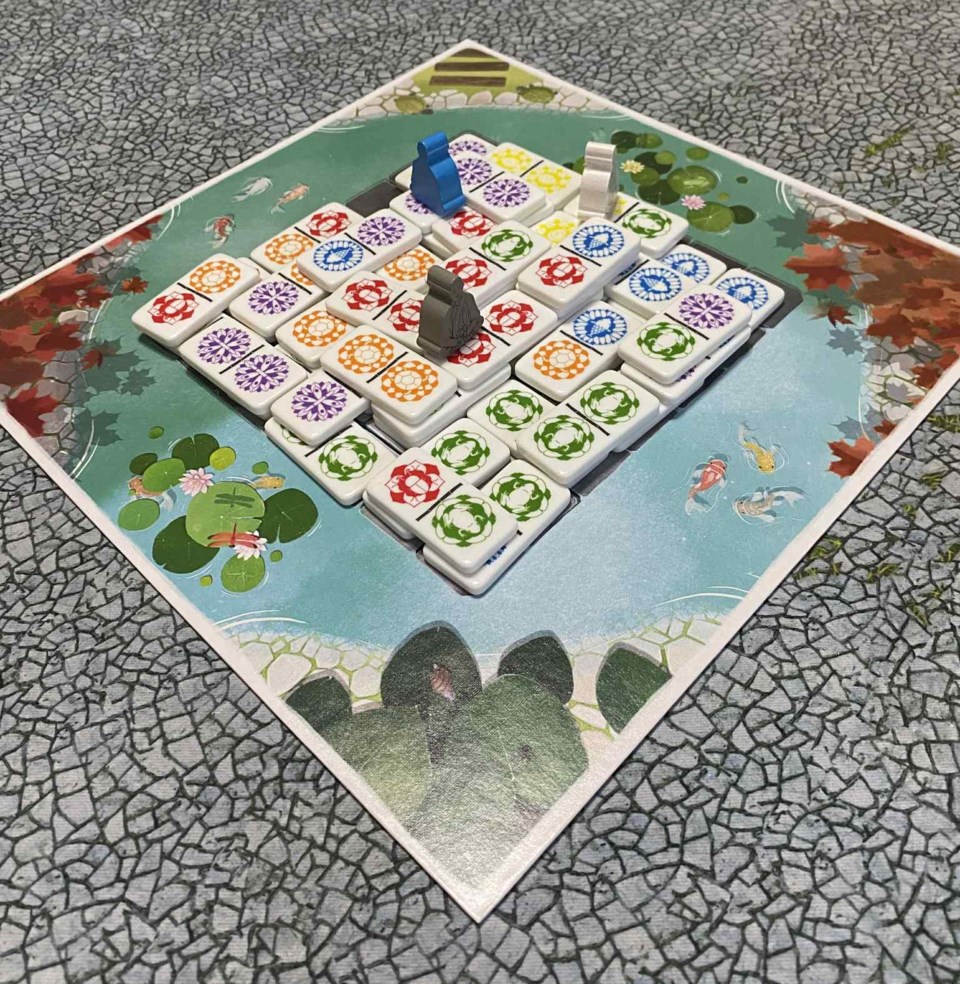YORKTON - When you board game you are often attracted to certain themes; for example Vikings or cute kittens.
Now only rarely does a theme really impact game play, but it helps create mood at least.
Then there are times where a game theme is so weak that it does nothing for the experience.
That is the case with Ananda from designer Dirk Barsuhn, artist Matthias Holländer, and publisher Zoch Verlag, which is supposed to be about monks meditating to expand their temples to gain karma. It does nothing for the game.
However, this one is a tile layer that is sort of like Dragon Castle in reverse.
Now Dragon Castle is a highly rated game for The Meeple Guild and Ananda doesn’t reach such lofty heights, but there is a kinship. In Dragon Castle you collect tiles from a stacked structure of tiles, while in Ananda you are building the structure through the game.
So, let’s start inside the box.
The tiles aren’t overly chunky but they are nice, and have an oriental art theme we liked.
There are tile trays, card board you have to fashion into the actual tray -- functional, but wooden ones would have been nicer.
The tiles start face down on the table for players to pick from. A cloth bag would have made a lot of sense, especially since the little tile box probably won’t get reused, so a bag would save the tiles from rattling around in the bigger game box.
So, The Meeple Guild asked designer Dirk Barsuhn what was the idea which led to creating this game?
“I have always been fascinated by the Chinese puzzle game Mahjong and its Far Eastern aesthetics and elegance,” he offered via email. “But unlike Mahjong, I wanted to develop a game where you build up the tiles bit by bit instead of taking them off the board, so that over the course of the game a growing, three-dimensional puzzle is created that the players have to solve.”
Overall Barsuhn said he was hoping to create a game of subtle relaxation.
“If the players forget the world around them for a certain period of time and immerse themselves in the imagined ‘game world’, I have already come very close to my goal,” he said. “However, this applies to all the games I develop. The high level of interaction in Ananda . . . makes it difficult to plan your moves well in advance. The spontaneous reaction to the other players’ actions presents the players with new challenges every turn and keeps the game lively. . .
“The best element is the interplay of several elements. It is the interaction of the simple mechanisms, which mesh together like clockwork and give the game its driving dynamic. Placing tiles, playing victory points, scoring the difference and receiving a supply of tiles, which in turn influences the number of cards in your hand. All of these elements interlock smoothly and ultimately form one big whole, which gives the game its flowing character.?
The game certainly is a reactive one, with options often limited, so you make the best of what is available on a given turn. Interestingly, in the end scores come out close, so you are generally always in the hunt for a win.
Check Ananda out at www.zoch-verlag.com






